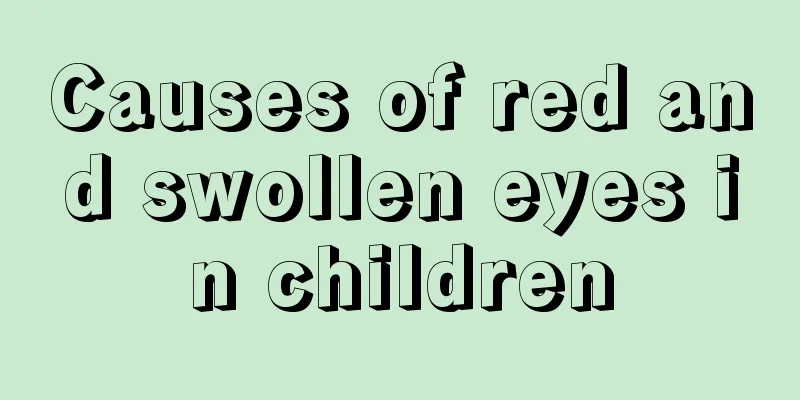What are the treatments for hydrocephalus in infants?

|
Hydrocephalus is a common disease in infancy and childhood, and the incidence rate is relatively high. After becoming ill, patients often suffer from symptoms such as mental decline or dementia. Therefore, parents must seek treatment as soon as possible after discovering their children's illness. Early treatment leads to early cure to avoid the disease from worsening. So what are the treatments for hydrocephalus in infants? Let’s find out. Drug therapy: is a common treatment method. The shortcomings of drug therapy may include: ① It can only temporarily relieve symptoms such as intracranial hypertension caused by hydrocephalus. ② Long-term medication can easily cause electrolyte imbalance, liver and kidney function damage, etc. Drug treatment often includes: ① dehydrating agents: such as mannitol; ② diuretics: such as hydrochlorothiazide (hydrochlorothiazide), furosemide; ③ adrenal cortical hormones: such as dexamethasone (flumethasone), prednisone (prednisone); ④ carbonic anhydrase inhibitors: such as acetazolamide (acetazolamide); ⑤ brain cell activation and nutrition agents: such as cerebrolysin, brain nerve growth factor, etc. Surgical treatment: In the past 20 years, scholars from all over the world have conducted a large number of clinical studies on the treatment of hydrocephalus, but there has been no breakthrough progress. Surgical treatment is the main research approach, which can be summarized as follows: ① lateral ventricle-cerebellomedullary cistern shunt; ② autologous great saphenous vein transplantation for lateral ventricle-internal jugular vein shunt; ③ ventricle-thoracic duct shunt; ④ lateral ventricle-cortical vein shunt; ⑤ lateral ventricle-transverse sinus shunt; ⑥ lateral ventricle-lymphatic shunt; ⑦ cerebral aqueduct catheterization; ⑧ ventricle-atrial shunt; ⑨ ventricle-superior sagittal sinus shunt; ⑩ ventricle-peritoneal shunt; (11) ventricle-bladder shunt; (12) lateral ventricle drainage. But the most commonly used are ventriculoatrial shunt and ventriculoperitoneal shunt. Before implementing surgical treatment, it is necessary to understand the indications for surgery. Surgical indications for hydrocephalus: ① Congenital hydrocephalus (communicating and non-communicating): symptoms worsen, Chinese and Western medicine treatments are ineffective, the child has no serious intellectual disability and the cerebral cortex still has a certain thickness; ② Acquired obstructive and communicating hydrocephalus; ③ Normal intracranial pressure hydrocephalus. Regarding the introduction of the treatment methods for hydrocephalus in infants, we hope that parents can pay attention to it and actively treat their children's disease with methods such as medication and surgery. Active treatment in the early stages of the disease can alleviate the deterioration of the disease. We should also pay attention to nursing work in daily life. |
<<: Is it okay for my baby to sleep on his side?
>>: Why does a newborn baby sneeze?
Recommend
5 wrong sleeping methods for babies affect their health!
Sleep plays an important role in the growth and d...
What is the reason for the child's hard stomach
Children have various problems in life. Sometimes...
What kind of dance is good for children? It depends on the individual.
Many parents know that dancing can exercise child...
Can children eat mangoes when they have a cough? Why?
If a child has a cough, whether he can eat mangoe...
Baby diarrhea diet therapy
1. Steamed applesauce: Steamed apples have a good...
Children's nail pitting
Sunken nails are a common phenomenon among childr...
Are children's fever patches effective?
Children have relatively poor immunity, so they a...
What is the cause of the child vomiting milk?
Breast milk is the first choice for female friend...
What is osteoporosis in children?
When it comes to osteoporosis, everyone probably ...
Why do children have nosebleeds at night?
There are many reasons for nosebleeds, but the re...
How to treat tongue ulcer in children
Tongue ulcers are a common symptom of disease in ...
What should I do if my child suffers from recurrent constipation?
I believe everyone is familiar with the word cons...
White flakes on the child's scalp
Children's hair is relatively easy to clean b...
How much is the height and weight of a two-year-old and two-month-old baby?
After a child is born, there will be some changes...
Two week old baby crying at night
A two-week-old baby is very small, and his physic...









